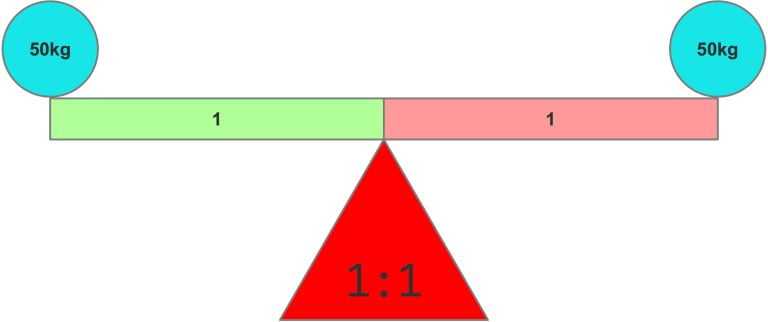

A Lever is: a beam or rigid rod pivoted around a hinge or fulcrum. The word originates from a French verb meaning "to raise". A simple example is to place a crowbar under a paving slab then push down to raise it. Though no lifting is involved levers used to rotate a shaft or fastener are also forms of leverage.
The position of the fulcrum determines the mechanical advantage. Let's start with an edge case: A children's Seesaw. It is the same length either side, the mechanical advantage, calculated by dividing the length on one side into the other is, in this case, 1. With two people of equal mass it will balance.
If the fulcrum is off centre measuring two length units on one side and one on the other then pressing on the long end gives a mechanical advantage ratio of two to one. The amount of force needed to balance 100kg on the short end will be 50kg at the long end.
The other edge case is where the fulcrum is at one end. The spanner is an obvious example, where the shaft itself is the fulcrum. This system can't be balanced but mechanical advantage still applies as a lever twice as long needs half the force to deflect the item on the other end - see "wheel-and-axle".